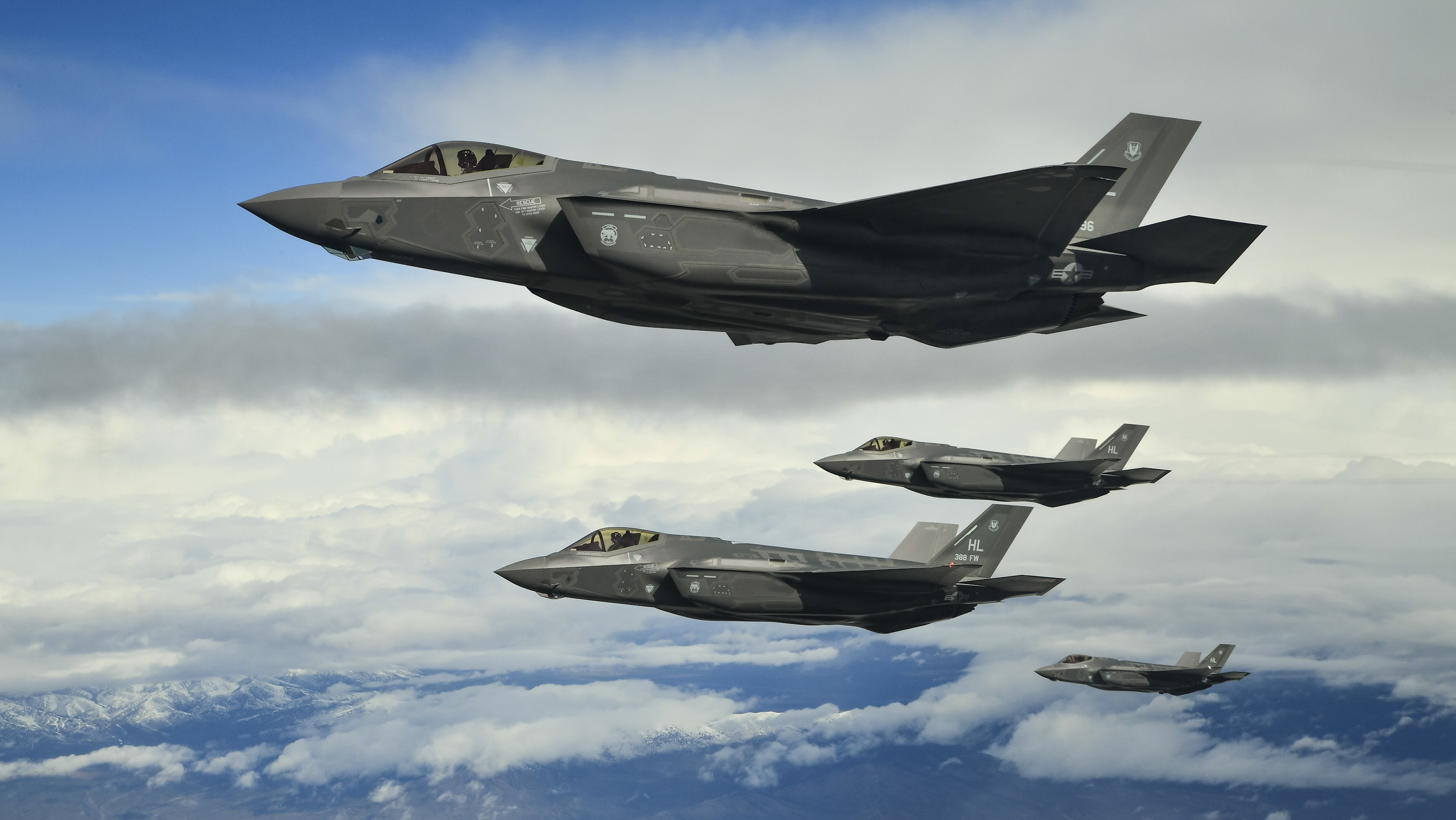F-35A Lightning II strike fighters from the 388th Fighter Wing at Hill AFB, Utah, fly in formation over the Utah Test and Training Range, March 30, 2017. Air Force photo by R. Nial Bradshaw.
The price of the F-35A—the Air Force version—will drop below $79 million within the next three years, but just a few years later, it will start going up again, outgoing program director Lt. Gen. Christopher Bogdan said in an exit interview with Air Force Magazine.
The price of the F-35 has come down, lot after lot, for five years. The $79 million price—in 2020 dollars—includes an engine and program fee, he said, and is for the “baseline” jet equipped with the 3F software, sensor, and weapons suite. However, “there’s a caveat” with that number, Bogdan noted. That price is “based on a particular ramp rate and quantity profile,” and if the production rate of the F-35 is slowed, the $79 million figure will “take longer” to get to.
“Every time you take airplanes out,” it will delay the most efficient rate, he said. Looking ahead, though, as a series of substantive upgrades begin to appear in production, “they’re going to cause the airplane to cost more,” he acknowledged.
A 2020 airplane, he said, lacks the “follow-on modernization and enhancements that will come in the 2022-2028 timeframe, and those enhancements are going to cost money.
The Block IV upgrade program, now being mapped out, will enhance every aspect of the F-35, Bogdan said. “We will put many more weapons on this airplane; both weapons we know of and future weapons to make the airplane more lethal.” From flight test and early operational use, Bogdan said “we’ve found out … this airplane has such a tremendous sensor capability, that now we have to make sure that the weapons that go with all that sensor capability can use it,” but he declined to elaborate further.
“I guarantee” the F135 engine will be upgraded, Bogdan said, either with a range of new components or replaced by a whole new engine based on technology programs now coming to fruition through an Air Force Research Laboratory propulsion programs. Whether all-new or “significantly modified,” Bogdan said “that’ll be a decision we have to make in the future.”
Either way, there will be substantial increases in “efficiency, thrust, range and reliability,” he said. The AFRL has touted improvements in range of as much as 30 percent with the next generation of fighter engines.
Bogdan also said, “There are some sensors on the airplane that will be replaced or improved in the future, as they get better.” Further, “one of the things that I’m sure is right for the F-35 is new electronic warfare techniques, and things that make the airplane more adaptive to the environment it’s in instead of maybe having to go back and reprogram” it. The jet will be able to “see new threats and react to them, even though the airplane might not have expected to see that threat, initially.”
The F-35 today relies on a vast store of mission data files, constantly updated, which catalog all the potential threats—fixed and mobile—in a given geographic area.
“We’ll never be done upgrading ALIS,” the Autonomic Logistics Information System, Bogdan said. “We’ll look for different, architectural changes in the future [and] we may go to a ‘cloud’ someday. We’ll definitely look for remote administration,” which would be a kind of centralized ALIS operations center that would relieve “guys at the squadron level” of administrative tasks, such as keeping ALIS running and making software patches.

